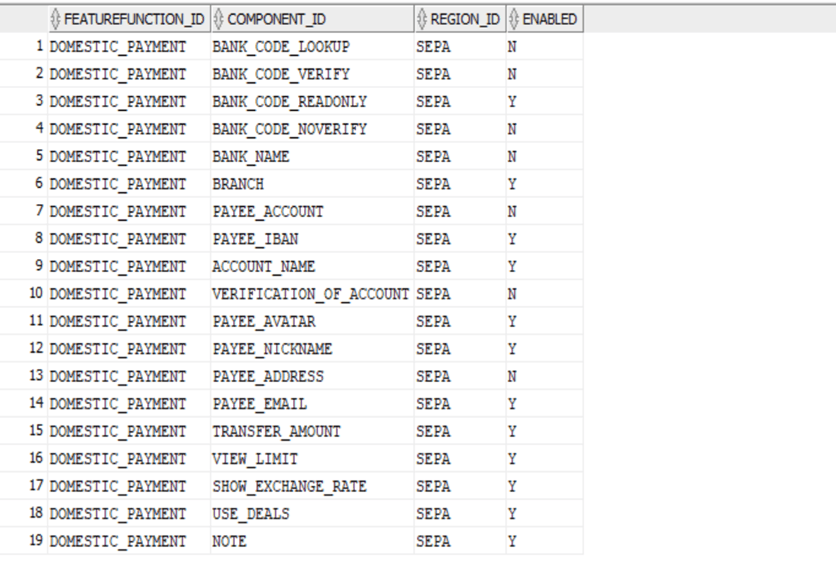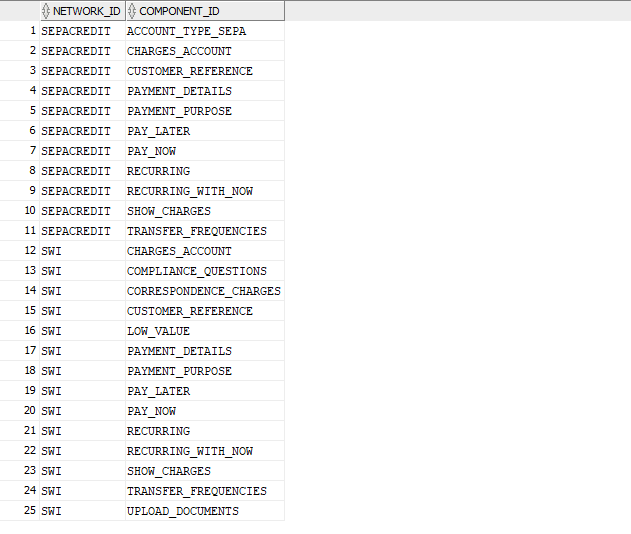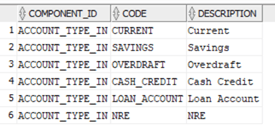4.3 Component Mapping
This topic provides the systematic instructions for component mapping.
- If the fields which are region-specific, that are needs to be visible to all
networks in the region.
- To manage these common components, do mapped them in the
DIGX_RG_FEATUREFUNCTION_COMPONENT_MAPPINGtable.Figure 4-3 DIGX_RG_FEATUREFUNCTION_COMPONENT_MAPPING table
- To manage these common components, do mapped them in the
- If a new region is added, implementer needs to add the corresponding mapping
in
DIGX_RG_FEATUREFUNCTION_COMPONENT_MAPPINGtable. - Upon adding a new region, map it in the
DIGX_RG_FEATUREFUNCTION_COMPONENT_MAPPINGtable.Table 4-2 DIGX_RG_FEATUREFUNCTION_COMPONENT_MAPPING table
Column Name Significance FEATUREFUNCTION_ID The id of the feature function. COMPONENT_ID The id of the component REGION_ID Represents the Region of the network.
The region_id and id of the newly added region should be same
ENABLED Represent whether network is enabled or not. - If a field is network-based, it will only be visible to its specific network
within the region.
- Map these components in the
DIGX_RG_NETWORK_COMPONENT_MAPPINGtable.Figure 4-4 DIGX_RG_NETWORK_COMPONENT_MAPPING table
- Map these components in the
- If a component's data type is a List Of Values (LOV), configure list values in
the
DIGX_RG_COMPONENT_VALUE_MAPPINGtable.Figure 4-5 DIGX_RG_COMPONENT_VALUE_MAPPING table
Parent topic: Configuration of Components


